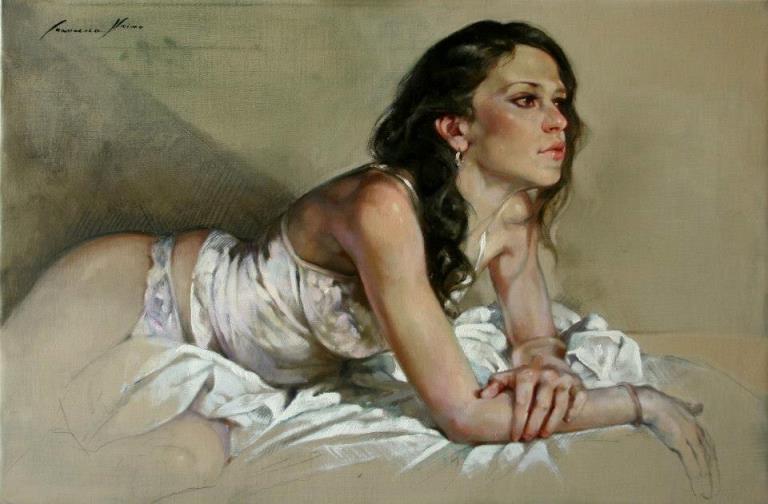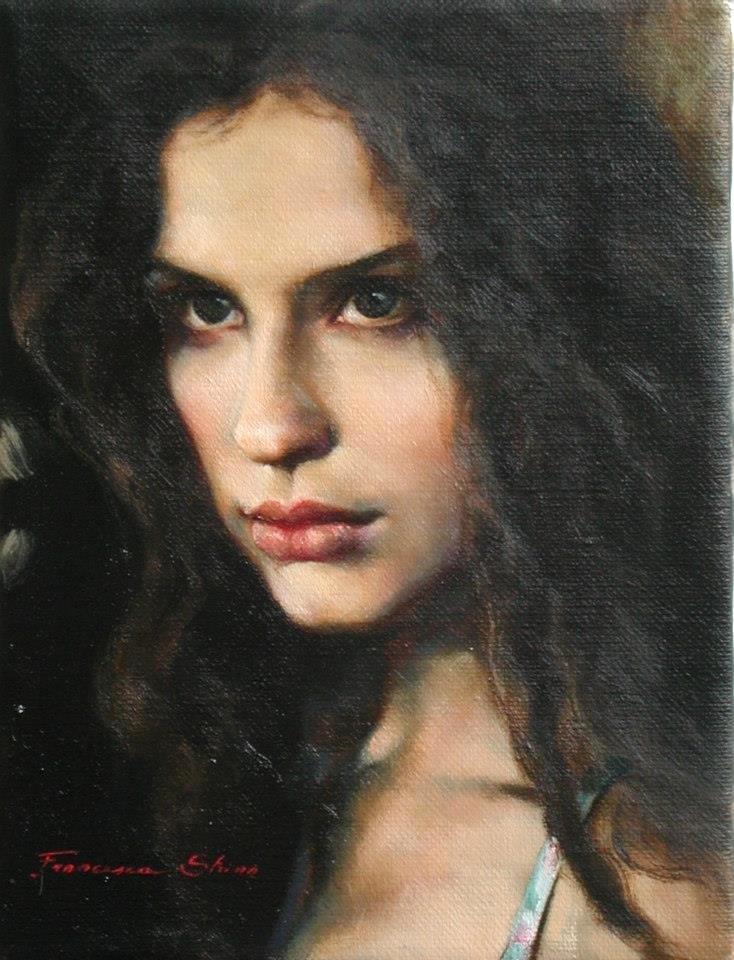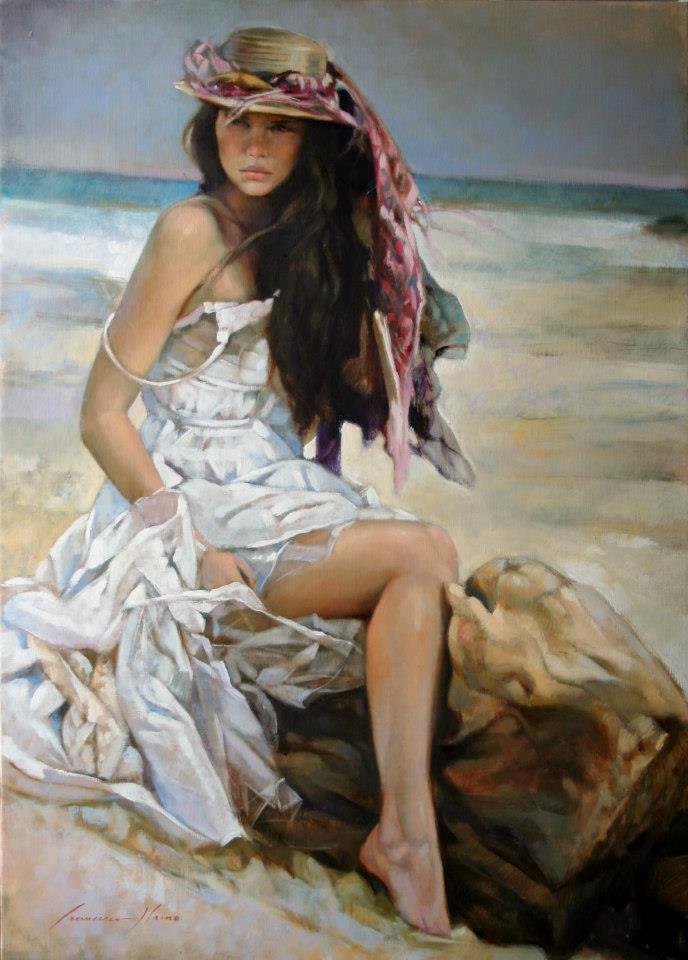Francesca Strino's Paintings
Francesca Strino, on the other hand, was incredibly fortunate. She happened to be a student of an exceptional painter and an even better instructor, Gianpietro di Fiore, at the Academy of Fine Arts in her hometown of Naples. The "foundation," formed from the skills acquired during home schooling, became a dependable foundation for Francesca Strino's strong and integral style. The protagonist of our piece was given a solo exhibition at the age of 23 as part of the Neapolitan Academy's 250th anniversary celebrations. Even so, young Strino was able to capture the attention of professionals as well as the interest of connoisseurs of good painting...
Francesca Strino's paintings were a successful fusion of the image of the contemporary lady with the post-classical elements of 17th-century Italian fine art. The notion of revisiting "baroque" elements in a postmodern manner was not very valuable. No, not at all. The "full-bloodedness" of each of their emotional expressions is the whole idea. These artworks "bribe" the author's candour when discussing timeless subjects. Love and desire, anticipation and acquisition, openness or apathy... This pattern in Francesca Strino's work only grew stronger over time. Fortunately, the artist began to pay greater attention to the mix of smooth and translucent strokes, combining them to create various permutations of texture.
Today, any artist may easily conceal the secondary meaning beneath an ironic portrayal. Ms. Strino's painting's strength is that she does not do this. She just refuses to be concerned about the audience's misinterpretation and condemnation. She wishes to employ the now-"unfashionable" rich tones and juicy tints, and she does so in order to provide the heroines with sensuous, idealised beauty. She is influenced by genre compositions' basic yet timeless ideas, and she endows her figures with the minimal facial expressions or rich plastique of "late academic" Venuses or "early Romantic" Juliettes. Allows beauties to fascinate us with the depth of their eyes, tease admirers with the matte shine of delicate skin, and wound men in love with the corners of their lips... If required, the artist will resort to direct "quoting" of Renaissance masterpieces. Simultaneously, images of local "muslin young ladies" should be replaced with nervous modern supermodels. Or vice versa: he "ask" baroque angels to descend on his sinful canvas in order to offer them the duties of mother, sister, friend... She "teaches" them to spark and soothe, to care for and protect...
It also works. Because it originates from the artist's heart and is expressed without a second bottom or reflection. From tremendous love to a bright and full life, outstanding taste and daring unrivalled in our times: the desire to restore the feminine image's beauty. Solid in its frailty, but also in its elegance. That is exactly how the Creator intended it to be.















































































No comments:
Post a Comment